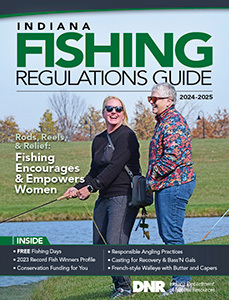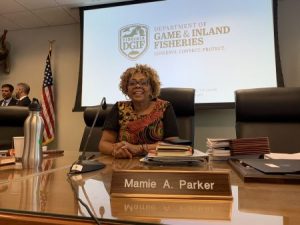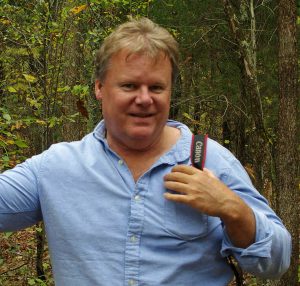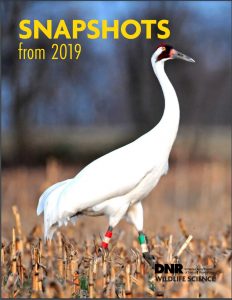Division of Forestry
Indiana Department of Natural Resources
402 W. Washington St.
Indianapolis, IN 46204-2748
For immediate release: Nov. 20, 2018
Forestry division hosting open houses
The DNR Division of Forestry will host open houses at many of its locations, Dec. 11-13, to share how the division works to protect forests.
At each event, division staff will provide information about recreational activities, major projects, forest resource management, and State Forest planning. Attendees will also be able to speak directly with DNR personnel or submit written comments. Some of the open houses will include a tour of facilities, guided hikes, and interpretive programs. See below for a listing of the open houses and events planned at each property.
“These open houses provide Hoosiers with a chance to receive first-hand information about how the State Forests are working to provide diverse wildlife habitat, forest products and recreational opportunities,” State Forester John Seifert said. “They also allow us to receive valuable feedback from our neighbors and users about State Forest management. I encourage everyone who has an interest to participate.”
Events and open houses include:
Owen-Putnam State Forest: Dec. 11, 3:30 to 6:30 p.m. at the property office, which is five miles west of Spencer and less than one mile north of S.R. 46. There will be a forester-led, short winter hike at 4 p.m. Call 812-829-2462 for more information.
Clark State Forest/Deam Lake SRA: Dec.11, 3:30 to 6:30 p.m. at the Clark State Forest office, which is one mile north of Henryville on U.S. 31. Topics that will be highlighted include campground and gun range improvements. There will be a one-mile, forester-led winter walk at 4 p.m. Call 812-294-4306 for more information.
Harrison-Crawford State Forest: Dec. 11, 3:30 to 6:30 p.m. at the recently renovated property office. The office is located off S.R. 462, just past the gatehouse for O’Bannon Woods State Park. Call 812-738-7694 for more information.
Ferdinand/Pike State Forest: Dec. 12, 3:30 to 6:30 p.m. at the Ferdinand office which is off S.R. 264, approximately four miles northeast of Ferdinand. There will be a 4 p.m. walking tour of the forest’s lakeside recreational sites. Call 812-367-1524 for more information.
Martin State Forest: Dec. 12, 3:30 to 6:30 p.m. at the Martin State Forest main office off U.S. 50, approximately four miles northeast of Shoals. Visitors can view the newly renovated Martin Lake shelter house or join the forester at 4 p.m. for a short winter hike. Call 812-247-3491 for more information.
Morgan-Monroe/Yellowwood State Forest: Dec. 12, 3:30 to 6:30 p.m. at the Training Center at Morgan-Monroe State Forest off S.R. 37, approximately six miles south of Martinsville. There will be a tour of the renovated visitor center at 4 p.m. Call 765-342-4026 for more information.
Jackson-Washington State Forest/Starve Hollow SRA: Dec. 13, 3:30 to 6:30 p.m. at the Starve Hollow Forest Education Center off S.R. 135, approximately two miles southeast of Vallonia. There will be a tour of the Starve Hollow lake restoration project at 4 p.m. Call 812-358-3464 for more information.
Salamonie River/Frances Slocum State Forest: Dec. 13, 3:30 to 6:30 p.m. at the property’s main office located on S.R. 524, approximately six miles east of Wabash. Call 260-782-0430 for more information.
Green-Sullivan State Forest: Dec. 13, 3:30 to 6:30 p.m. at the property office on S.R. 159, approximately 1.5 miles south of Dugger. There will be a 4 p.m. tour of the campground and lake restoration project. Call 812-648-2810 for more information.
Property staff is also available during normal business hours. Go to the Division of Forestry’s webpage (dnr.IN.gov/forestry/3631.htm) for contact information.
The Division of Forestry promotes and practices good stewardship of natural, recreational and cultural resources on Indiana’s public and private forest lands. This stewardship produces continuing benefits, both tangible and intangible, for present and future generations.
To view all DNR news releases, please see dnr.IN.gov.
Media contact: Marty Benson, DNR Communications, 317-233-3853, mbenson@dnr.IN.gov.


 Keynote Speaker: Dr. Mamie Parker
Keynote Speaker: Dr. Mamie Parker
